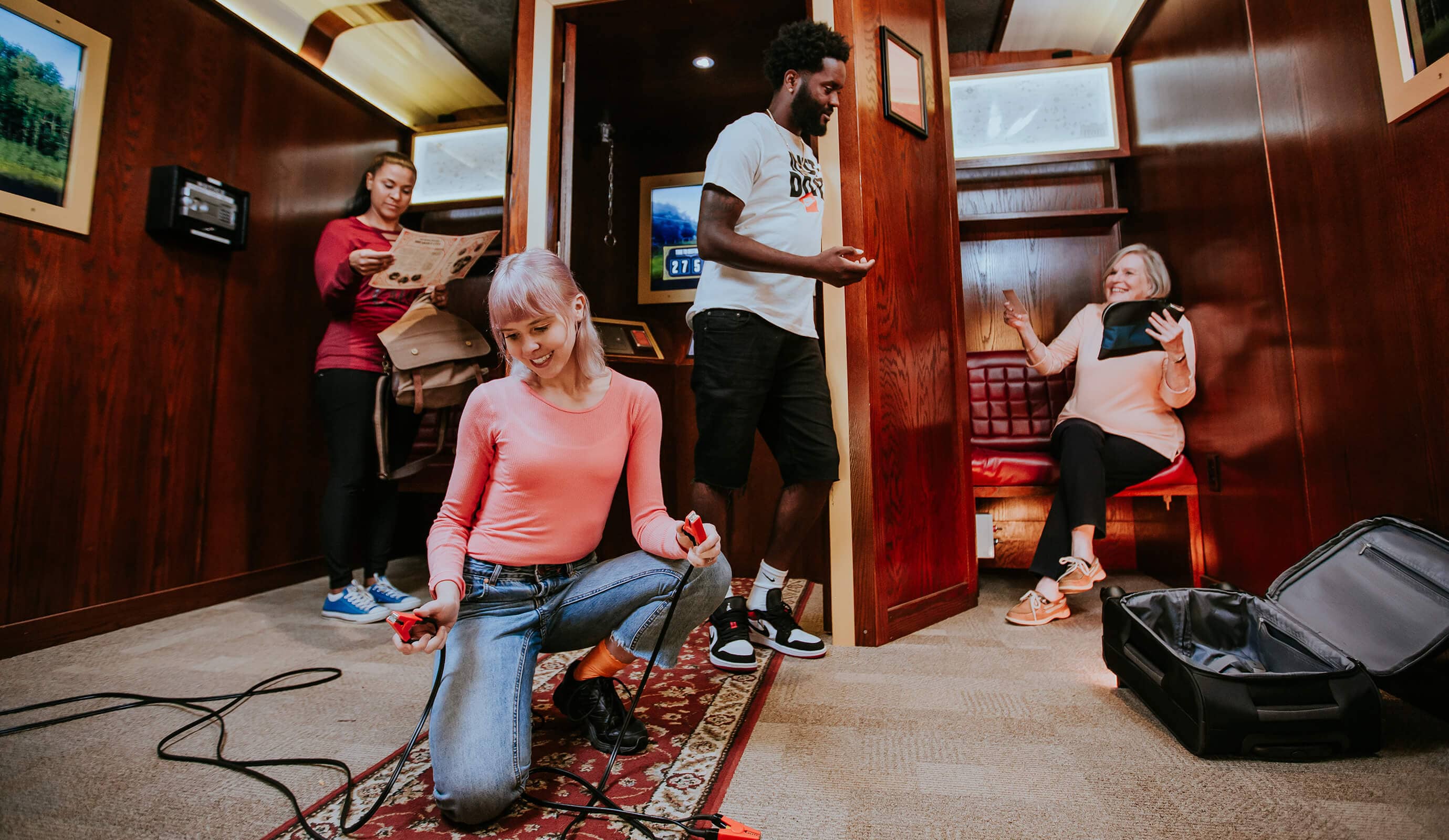Best Escape Room-- Examination Your Abilities and Solve the Mystery
Best Escape Room-- Examination Your Abilities and Solve the Mystery
Blog Article
Group Approaches: Exactly How to Collaborate Effectively in an Escape Area
Navigating the intricacies of an escape space demands even more than simple interest; it calls for a well-coordinated approach grounded in clear communication, tactical role projects, and proficient time monitoring. Teams should actively listen to each member's insights, assign roles that straighten with individual staminas, and maintain routine check-ins to guarantee emphasis and stop redundancy. By fostering an atmosphere that values cohesion and adaptability, groups can considerably heighten their performance and success prices. The nuances of these approaches can transform the experience, but exactly how precisely can they be implemented to take full advantage of the possibility for success?
Establish Clear Interaction
To promote clear interaction, it is important to designate a central factor of get in touch with for info dissemination. This role entails summarizing findings and proposed approaches to make sure every person remains on the exact same page. In addition, embracing a systematic method to discussions can prevent disorderly exchanges. Brief, focused updates from each team participant can keep the group notified without overwhelming them with information - best escape room.

Appoint Functions Strategically
While clear communication establishes the structure for effective teamwork, assigning functions strategically ensures that each employee's strengths are used successfully. In a getaway space situation, the time-sensitive and complicated nature of difficulties requires a well-organized technique to task delegation. By identifying and leveraging specific proficiencies, teams can optimize their analytical capacities and boost general performance.
Someone with a keen eye for detail could stand out in locating concealed things, while a rational thinker might be better fit to fixing challenges. This duty commonly calls for solid business and social abilities.
Second, make sure that functions are adaptable and adaptable. As new difficulties emerge, the team needs to be able to pivot, reapportioning jobs as called for. This flexibility aids keep energy and prevents bottlenecks that can occur as a result of inflexible function jobs.
Inevitably, a tactical technique to function job not only makes best use of the strengths of each team member but also promotes a cohesive environment, driving the group towards an effective retreat.
Make Use Of Diverse Skills
Acknowledging and utilizing the varied skills within your team can dramatically elevate your performance in a getaway space. Each team participant brings unique strengths to the table, and effectively leveraging these abilities can expedite analytic and boost total performance. As an example, a group participant with strong logical skills could succeed at figuring out intricate codes or patterns, while one more with keen observational abilities might rapidly identify hidden ideas that others may overlook.
Efficient communication is key to utilizing these diverse abilities. Encourage group participants to articulate their insights and concepts quickly, guaranteeing that all prospective solutions are taken into consideration. This comprehensive method promotes a vibrant setting where imagination and critical thinking can thrive. Furthermore, designating tasks that straighten with each participant's strengths can prevent traffic jams and make sure that progress is continuous.
In addition, diversity in skills typically converts to variety in assuming styles, which is important in an escape room setup. While some Find Out More obstacles might need logical reasoning and precision, others may take advantage of imaginative and association of ideas. By recognizing and leveraging this variety, teams can address a broader variety of obstacles extra successfully, thus increasing their opportunities of an effective retreat.
Manage Time Properly

First, assign first minutes for a fast study of the area. Identify visible puzzles and divide jobs based upon team participants' toughness, guaranteeing that nobody is still. Set inner time checkpoints to review progress occasionally; for example, aim to have half the challenges addressed by the mid-point of the video game. This method can help maintain the team concentrated and prevent time from escaping unnoticed.
Furthermore, prevent one-track mind. If a problem is taking too long, revolve employee or move on to one more obstacle, returning later with fresh point of views. Interaction is vital-- maintain every person updated on resolved problems and remaining jobs to stay clear of redundant efforts.
Lastly, make use of any kind of hints or clues moderately yet strategically - best escape room. Knowing when to request aid can save important time. By adhering to these time administration concepts, teams can dramatically boost their chances of an effective and pleasurable escape space experience
Debrief and Reflect
Reflection is a crucial element of team advancement and enhancement in the context of escape spaces. Once the difficulty is completed, whether effectively or not, it is crucial for the group to take part in an organized debriefing session. This process enables employee to analyze their performance, determine toughness, and pinpoint locations for improvement.
Begin the debrief by discussing what worked out. Highlight specific circumstances of reliable communication, analytical, and collaboration. Recognizing these positive habits reinforces them and motivates their rep in future challenges.
Following, address the obstacles experienced. visite site Review minutes of complication, miscommunication, or inefficient methods. Urge an open and positive discussion where employee can share their point of views without worry of criticism. This cultivates a society of continual improvement and knowing.
Conclusion
To conclude, successful partnership in an escape room is predicated upon clear communication, critical function jobs, the reliable application of directory diverse abilities, and competent time management. Normal check-ins and organized debriefings are necessary for keeping emphasis and fostering continual improvement. By producing a cohesive and flexible team atmosphere, the chance of efficiently resolving challenges and achieving the goal of getting away the area is significantly improved. This strategy not only guarantees success however additionally promotes collective growth and knowing.
Report this page